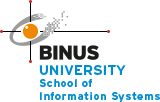Principles of Operation Security Intelligence in Intelligence Gathering

Effective intelligence gathering requires a balance between acquiring valuable information and safeguarding sensitive operations. Intelligence gathering is a crucial component of operational security. It involves collecting information about potential threats, vulnerabilities, and risks to an organization’s assets and operations. Effectively gathering and analyzing intelligence, organizations can enhance their security posture, reduce risks, and protect their valuable assets. Here are some key principles to guide secure intelligence operations:
Core Principles
1. Need-to-Know Principle:
o Limit Access: Restrict access to classified information on a strict “need-to-know” basis.
o Minimize Exposure: Reduce the number of individuals with access to sensitive intelligence.
2. Compartmentalization:
o Divide and Conquer: Separate intelligence operations into isolated compartments to limit damage in case of compromise.
o Control Information Flow: Implement strict protocols for information sharing between compartments.
3. Operational Security (OPSEC):
o Identify Critical Information: Determine what information could compromise an operation if revealed.
o Control Information: Limit the dissemination of sensitive information to essential personnel.
o Cover Your Tracks: Minimize the intelligence footprint to avoid detection and attribution.
4. Counterintelligence:
o Identify Threats: Detect and neutralize threats to intelligence operations, such as espionage and sabotage.
o Protect Sources and Methods: Safeguard intelligence sources and methods to maintain operational integrity.
5. Ethical Considerations:
o Adhere to Legal and Ethical Standards: Ensure all intelligence activities comply with domestic and international laws and ethical guidelines.
o Respect Human Rights: Avoid actions that violate human rights, such as unlawful surveillance or harassment.
Technical Considerations
1. Secure Communication:
o Encrypt Communications: Use strong encryption methods to protect sensitive information transmitted electronically.
o Secure Networks: Implement robust network security measures, including firewalls and intrusion detection systems.
2. Data Protection:
o Classify and Protect Data: Assign appropriate classification levels to data and implement robust security measures.
o Regularly Update Security Measures: Stay updated on the latest security threats and vulnerabilities.
3. Intelligence Analysis Tools:
o Secure Analysis Environments: Use secure and isolated environments for sensitive intelligence analysis.
o Regularly Patch and Update Tools: Keep analysis tools up-to-date to mitigate vulnerabilities.
Human Intelligence (HUMINT) Considerations
1. Agent Security:
o Protect Agents: Implement measures to protect agents from exposure and compromise.
o Secure Communication Channels: Use secure communication channels to minimize the risk of interception.
2. Source Protection:
o Maintain Source Identities: Protect the identities of intelligence sources to ensure their safety and continued cooperation.
o Limit Access to Source Information: Restrict access to sensitive source information to essential personnel.

